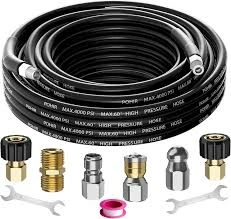power steering hose fittings
Understanding Power Steering Hose Fittings A Comprehensive Overview
Power steering systems are essential for modern vehicles, facilitating smoother and easier steering, especially at lower speeds. One critical component of this system is the power steering hose, which transmits hydraulic fluid under pressure to assist in steering. However, to function efficiently, these hoses rely heavily on their fittings. In this article, we'll explore the importance of power steering hose fittings, their various types, and maintenance tips to ensure optimal performance.
What Are Power Steering Hose Fittings?
Power steering hose fittings are components that connect the power steering hoses to the steering rack and pump. They are crucial for maintaining a secure connection, preventing fluid leaks, and ensuring the effective transfer of hydraulic fluid. Generally made of durable materials like steel or brass, these fittings are designed to withstand high pressure and varying temperatures that come with the operation of a power steering system.
Types of Power Steering Hose Fittings
1. Barbed Fittings These are designed with a series of ridges or barbs that help secure the hose onto the fitting, ensuring a tight seal. Barbed fittings are common in low-pressure applications and are often used in connection with rubber hoses.
2. Crimp Fittings Crimp fittings involve a metal sleeve or ferrule that is crimped around the hose to secure it in place. This type of fitting is popular in high-pressure applications, ensuring that the connection remains leak-free.
3. JIC Fittings The Joint Industrial Council (JIC) fittings have a 37-degree flare and are used for high-pressure applications. They are especially valued for their ability to create leak-proof connections, making them suitable for power steering systems.
4. AN Fittings Aerospace Standard (AN) fittings are often used in performance applications. They provide a robust and aerodynamic connection and are easily adjustable, making them ideal for enthusiasts looking to customize their vehicles.
5. O-Ring Boss (ORB) Fittings These fittings feature an O-ring that helps create a snug seal. ORB fittings are used for both hydraulic and pneumatic systems, providing a reliable connection that minimizes the risk of leaks.
power steering hose fittings

Importance of Quality Fittings
Choosing high-quality power steering hose fittings is crucial. Poor-quality fittings can lead to leaks, which may result in power steering fluid loss. Low fluid levels can compromise the performance of the entire steering system, leading to difficulties in maneuvering and a potential increase in wear on crucial components. Additionally, a leak can pose safety hazards, especially if it occurs while driving. Hence, investing in quality fittings ensures both the longevity of the power steering system and the safety of the vehicle.
Maintenance Tips
1. Routine Checks Regularly inspect power steering hoses and fittings for signs of wear, damage, or leaks. Early detection of issues can prevent costly repairs and ensure the system functions correctly.
2. Fluid Level Maintenance Regularly check the power steering fluid level. If you notice a drop, it may indicate a leak in the fittings or hoses that needs immediate attention.
3. Proper Installation Ensure that all fittings are installed correctly. Misaligned or loosely fitted connections can lead to leaks or complete system failure. Always follow the manufacturer’s specifications and use the appropriate tools for installation.
4. Replacement of Worn Parts If you notice any sign of wear, do not hesitate to replace the fittings or hoses. Using compromised connections can lead to severe damage to the entire steering system.
5. Use the Right Parts Always use the correct type and size of fittings for your specific vehicle. Incorrectly matched parts may lead to undesired performance effects and safety hazards.
Conclusion
Understanding power steering hose fittings and the role they play in the vehicle's steering system is crucial for any vehicle owner or mechanic. By being aware of the different types of fittings, their importance, and maintenance practices, you can ensure your power steering system remains operational and effective. Remember, a well-maintained power steering system not only makes for a smoother driving experience but also promotes overall vehicle safety.
-
Ultimate Spiral Protection for Hoses & CablesNewsJun.26,2025
-
The Ultimate Quick-Connect Solutions for Every NeedNewsJun.26,2025
-
SAE J1401 Brake Hose: Reliable Choice for Safe BrakingNewsJun.26,2025
-
Reliable J2064 A/C Hoses for Real-World Cooling NeedsNewsJun.26,2025
-
Heavy-Duty Sewer Jetting Hoses Built to LastNewsJun.26,2025
-
Fix Power Steering Tube Leaks Fast – Durable & Affordable SolutionNewsJun.26,2025

